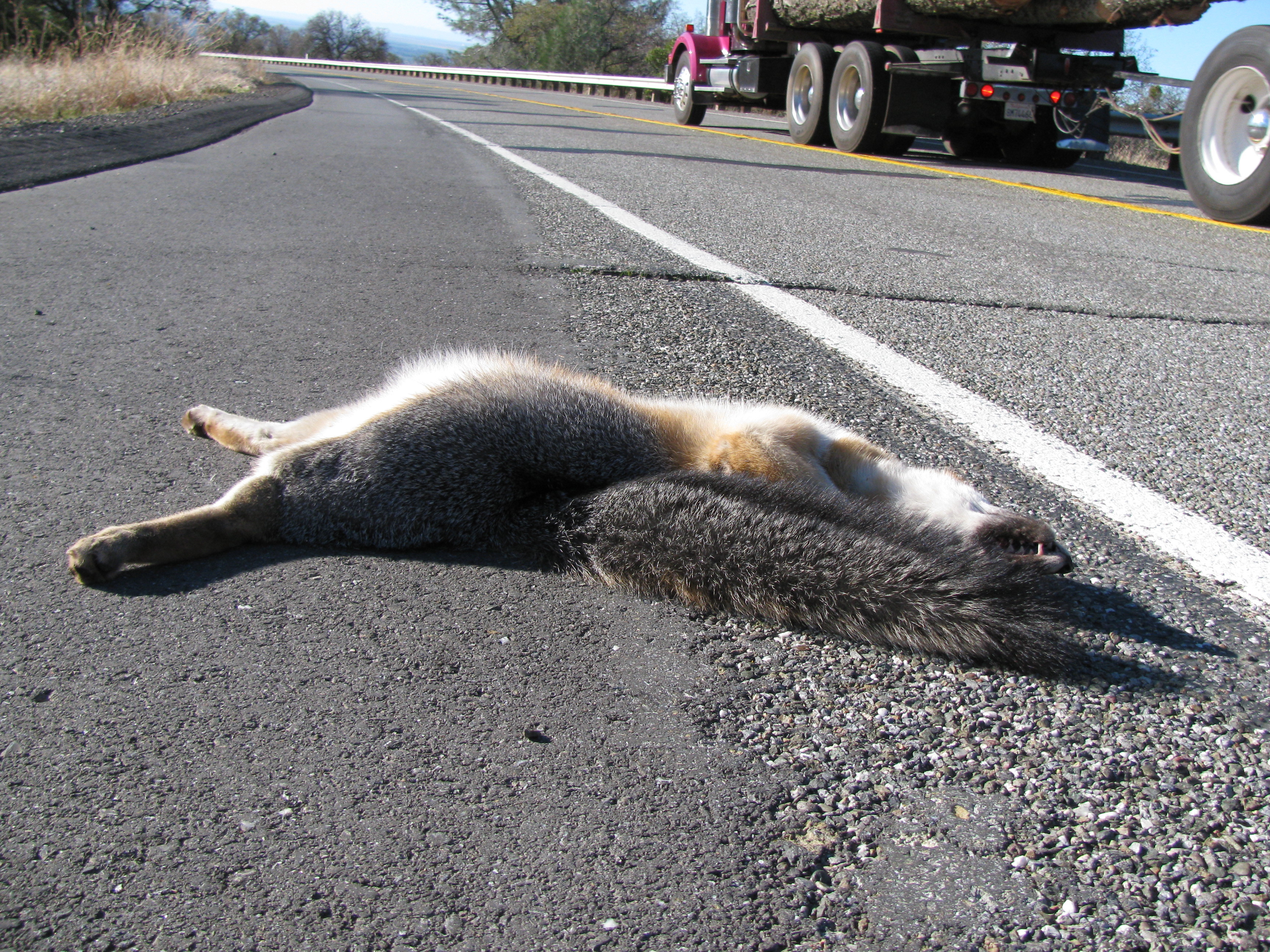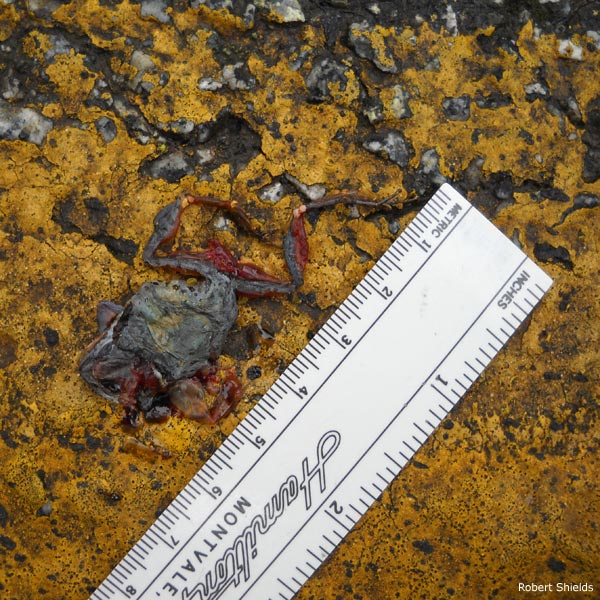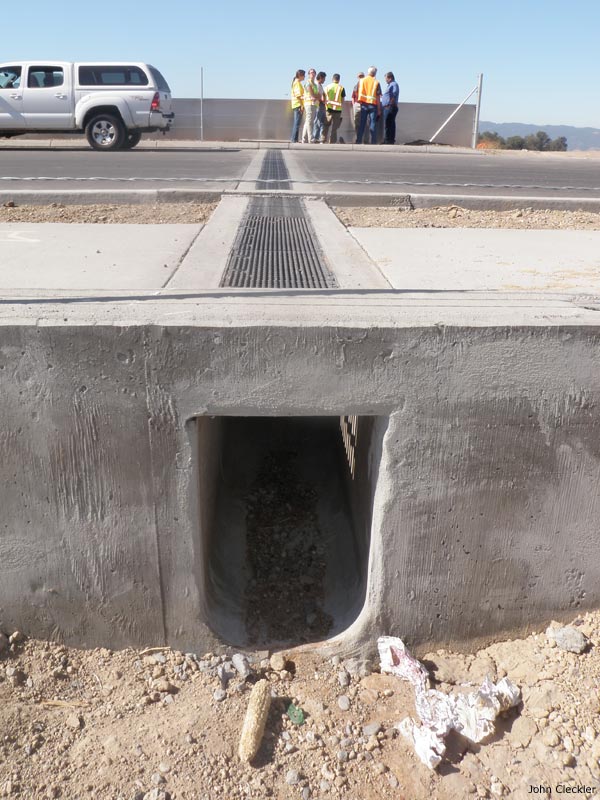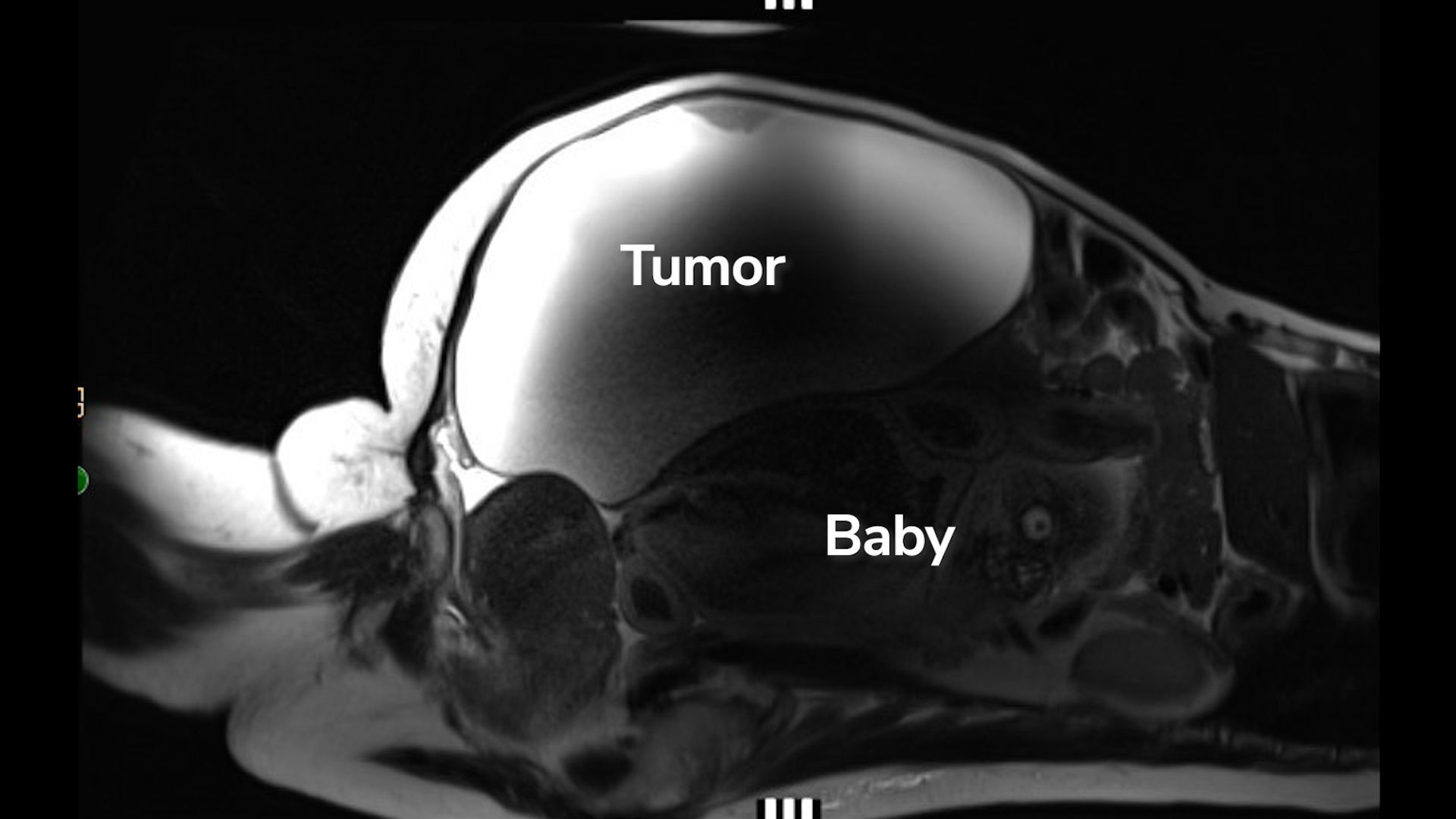Not in Vain: Roadkill Yields Valuable Clues

The smallish, dark-shelled Western pond turtle is California's only freshwater turtle, and its declining numbers have earned it the designation as a species of special concern.
As a biologist, Patricia Bratcher, knew how to recognize one — but it was too late as her car ran over it one day. "It was a baby, about an inch long, and it was travelling across the road, probably from one drainage to another," Bratcher said.
Pond turtles don't produce many young, so under other circumstances, Bratcher would have welcomed a sighting of one. But hitting an animal is heartbreaking, she said. And in a car-dependent nation, it is a common experience.
"For many years, I wondered if someone is studying this. If you drive as much as I do and you use areas where you have a lot of roadkill, it is very disheartening," said Bratcher, a staff environmental scientist at the California Department of Fish and Game. Now — mostly in her spare time — Bratcher is among nearly 600 people who record roadkill and contribute the information to a statewide database, the California Road Kill Observation System.
Valuable data
In August of 2009, Fraser Shilling, co-director of the Road Ecology Center at the University of California, Davis, launched the system on which anyone who hits an animal or encounters it after the fact is able to record its species and location. While a number of the top contributors, like Bratcher, are biologists, a background in science is not a requirement. Maine has a similar system, run by Maine Audubon.
As of Wednesday (Feb. 16) evening, the system contained about 10,700 observations from 572 observers. California is home to an estimated 650 native vertebrate species that spend either all or part of their life cycles in the state. As of the end of January, 266 of these species have shown up in roadkill observations that cover only about 5 percent of the state's public road network, Shilling said.
Get the world’s most fascinating discoveries delivered straight to your inbox.
"What that makes me suspect is if we were to survey all roads and highways, we would find that all or the vast majority of native vertebrates are being killed on our roads and highways," he said.
Shilling sees several purposes for the system. Tracking roadkill can help reveal why it happens in order to prevent the fatalities, and provide a better understanding of the animals and where they live. But as a so-called citizen scientist project that accepts contributions from anyone, regardless of academic credentials, the effort also has a less-quantitative mission.
"It is, strangely enough, a way for people to connect to our environment and especially to what we are doing to our environment," Shilling said.
Human safety is also an issue. Collisions with deer are particularly dangerous. The first year of data from the observation system indicates that collisions with deer peak in fall and late spring.
Eyes on the road
"I have always been interested in roadkill. People think, 'Oh my God, what a freak, some kind of scary bio Goth kid,'" said Douglas Long, a prolific roadkill observer. As a biologist and chief curator of the department of natural sciences at the Oakland Museum of California, Long has credentials backing up his interest. "As somebody that is interested in wildlife, roadkill is one way to be able to see and identify wildlife."
As a child, Long would ask his parents to stop the car, so he could get a better look.
"You could see the intricacies of the fur and the feathers, you could see the features of these animals that you couldn't really understand in a book and couldn't really see in the wild," he told LiveScience. "It isn't a ghastly, ghoulish thing to do. It was part of my learning and my understanding and my appreciation."
Roadkill is frequently a source of specimens for natural history museums, he pointed out.
"There's really nothing that can't be identified, if you get down and look at it," Long said. "It's like somebody who is a forensic detective, there is always going to be something that gives you an answer."
The collision of human development and wildlife factored into a natural resources management plan that Peter Maurer, a planner for El Dorado County, Calif., was working on and he became interested in contributing to the project on his own time, including during 300-mile drives to northern California.
"I am the kind of person who likes to tally things. As a kid I used to mark down how many different license plates and from how many different states," Maurer said. "I do a lot of driving solo, you get sort of bored in the car. I find myself really looking for roadkill."
Four California seagulls lying on the side of the Interstate 5, far from the ocean, were one of the most unexpected sights he's seen. Maurer speculates they were swarming near a rest area when a truck hit them.
What's missing
The 10 species most frequently spotted as roadkill are, in order of frequency: Raccoons, skunks, ground squirrels, deer, opossums, western gray squirrels, barn owls, desert cottontail rabbits, black-tailed jack rabbits and coyotes. All of these animals can live near or in rural landscapes, and some are comfortable near suburbia or agriculture, Shilling said.
But rarer, or less likely, animals show up too. Twice, at the same spot in Redding, Calif., Bratcher has found dead river otters, and Long has seen California sea lions that had been hit by cars. (They observed these roadkills before the observation system was in place.)
The no-shows can also be significant, Shilling said. For instance, the system so far does not include any reports of fishers, a member of the weasel family. If this doesn't change, it could mean these animals are avoiding roads. But in a state crisscrossed by them, avoiding roads could cause the populations to become isolated where interbreeding could make them more vulnerable to other threats.
For practical reasons, observers often identify animals from their car windows, but this raises the possibility that many small things, particularly amphibians and reptiles, go uncounted.
John Cleckler, a contractor for the U.S. Fish and Wildlife Service, remembers finding the "crispy" remains of a California tiger salamander. It is classified as vulnerable because of its declining numbers.
"Soft-bodied animals don't last very long," he said.
Solutions?
In California and elsewhere in United States and the world, people are trying to help animals, like the salamanders, get safely to the other side. In Alameda County, Calif., for example, tunnels under construction would create passages for the salamanders beneath traffic. Fencing along the sides of the road would guide the salamanders to the tunnels' openings, Cleckler said.
Like other observers, Cleckler is hopeful that the data collected through the observation system will lead to solutions like this one.
"Everyone has a visceral reaction when they see a splattered carcass," Cleckler said during a telephone interview. "I sort of think if I record this animal's location and death, maybe it wasn't in vain."
Shilling suggests a less expensive, but less likely solution than tunnels or overpasses.
"The main thing that causes it, is vehicles going too fast and not being able to avoid the collision," he said. "I know it's impractical to try to get people to slow down, but the reality is that's the main thing that is wrong."
You can follow LiveScience writer Wynne Parry on Twitter @Wynne_Parry.





